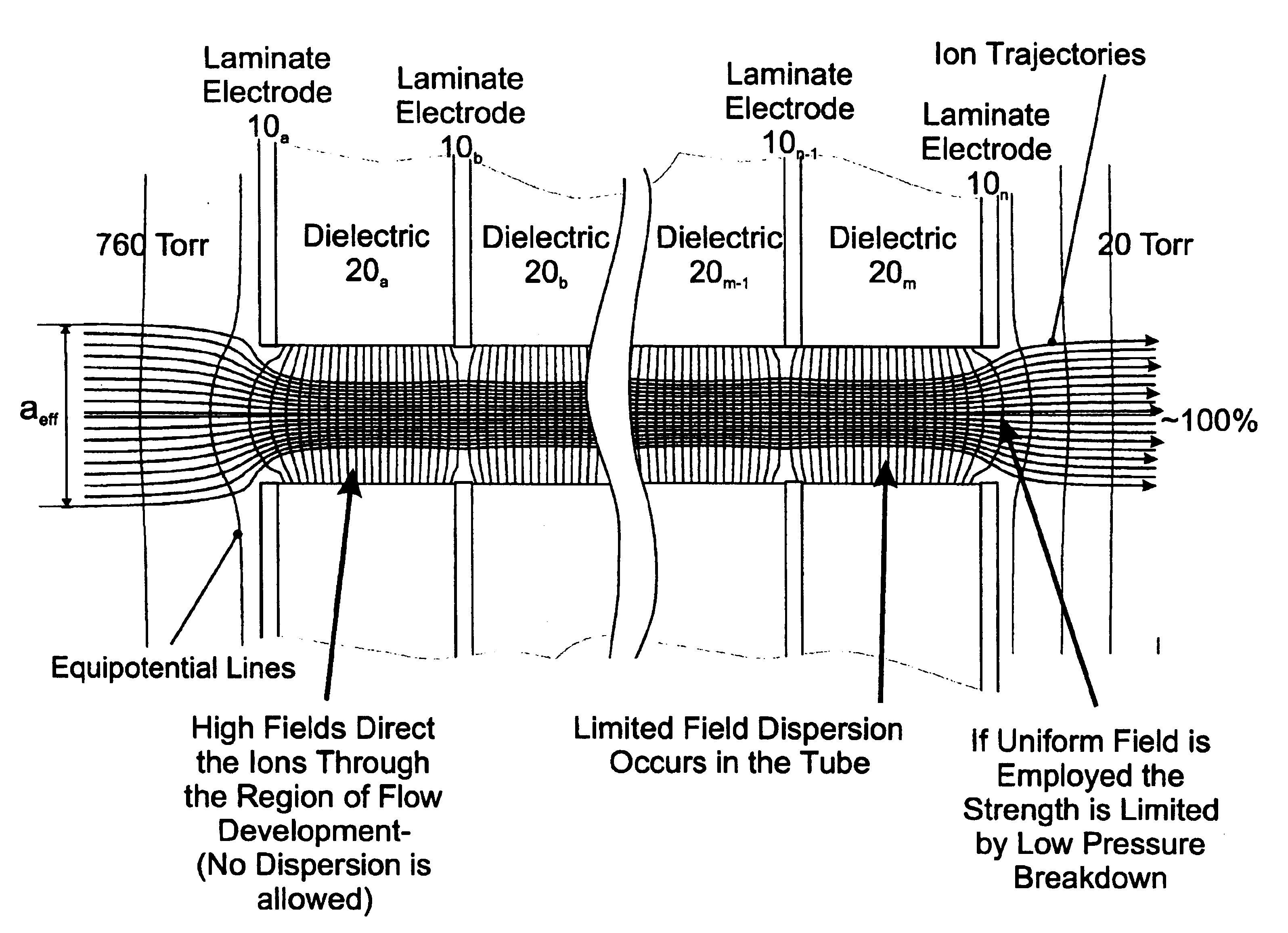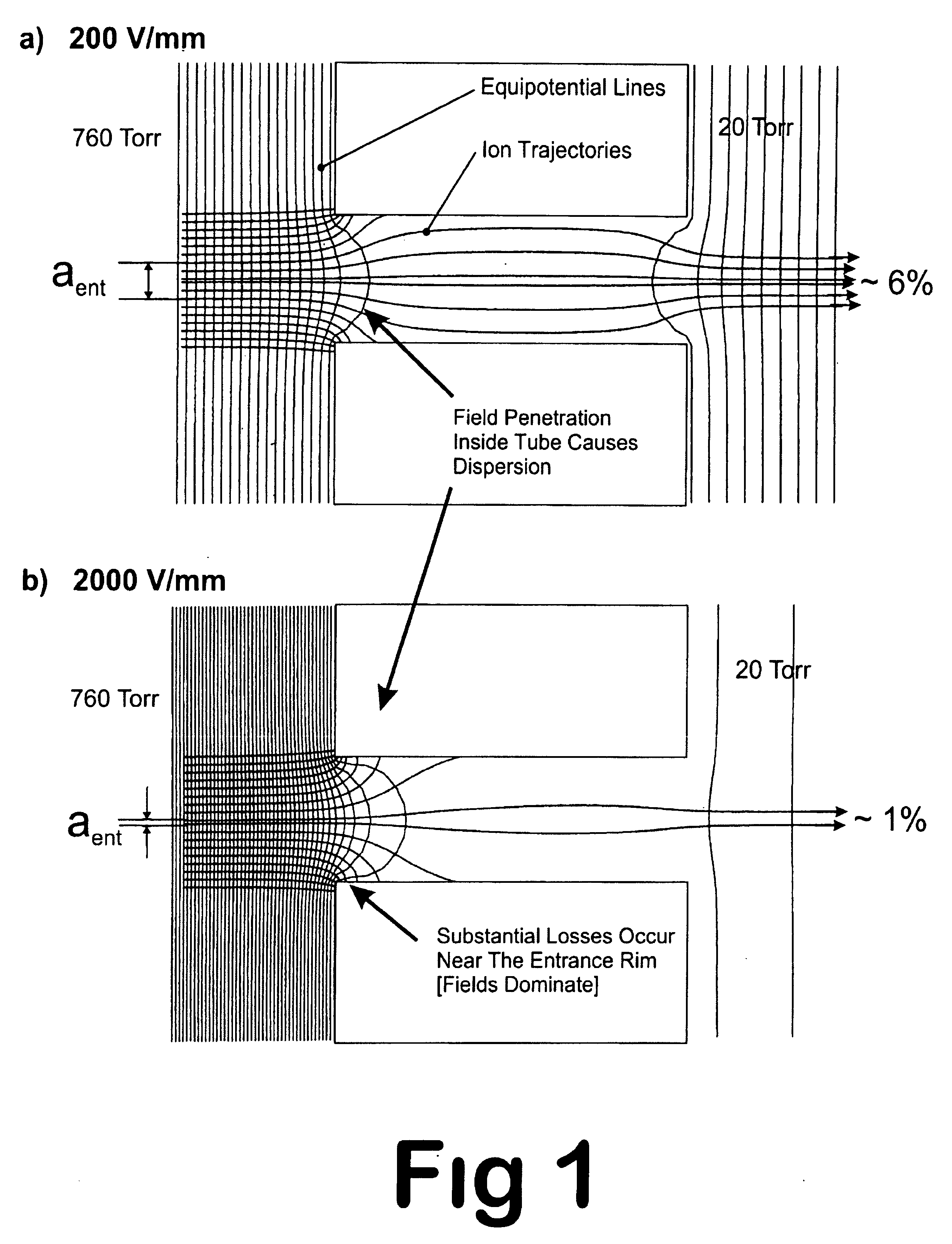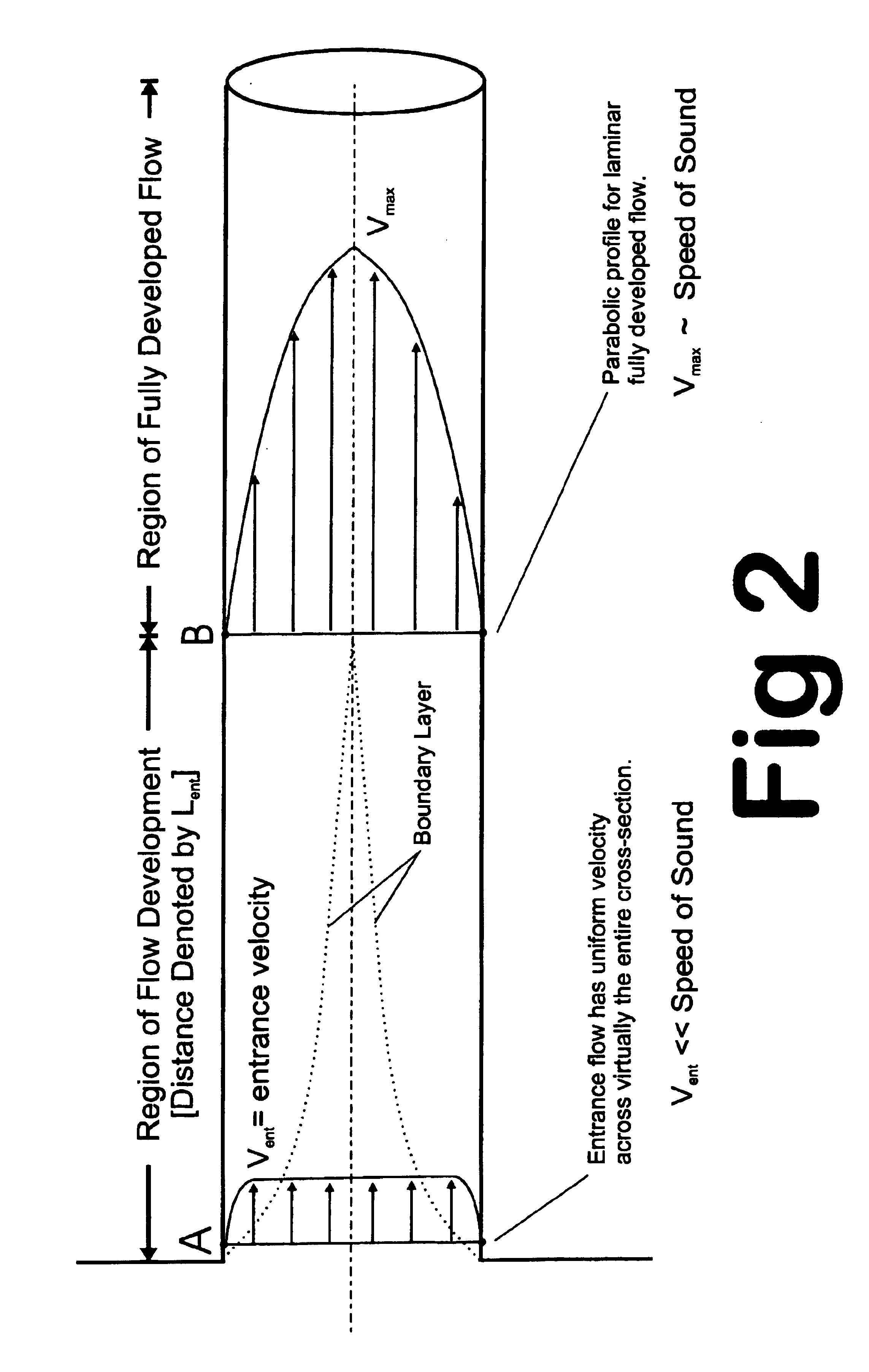Laminated tube for the transport of charged particles contained in a gaseous medium
a gaseous medium and charged particle technology, applied in particle separator tube details, electron/ion optical arrangements, separation processes, etc., can solve the problems of limiting the acceptance and transmission efficiency, low sampling efficiency through conductance or transmission apertures and capillaries or tubes, and dispersive sources of ions at or near atmospheric pressure. , to achieve the effect of reducing the gas load
- Summary
- Abstract
- Description
- Claims
- Application Information
AI Technical Summary
Benefits of technology
Problems solved by technology
Method used
Image
Examples
Embodiment Construction
[0103]A preferred embodiment of the laminated-tube or just tube of the present invention is illustrated in FIG. 5A, FIG. 7, and FIG. 10. The tube is made-up of a series of thin concentric planar metal laminates or layers 10, designated 10a, 10b, 10c, . . . 10n−2, 10n−1, 10n, separated from each other by a thin base layers 20, designated 20a through 20m, of uniform cross section and thickness consisting of non-conducting insulating material, the aggregate of metal laminatelbase pairs forming a lumen, defined by a laminatelbase inner surface or lumen 30. The tube thus has an entry 40 and an exit aperture 50 for introducing gases and gas-phase ions or charged particles from a tube entrance region 2 into a tube exit region 3 where they are transported toward an ion-collection region 70. Ions from a source region 1 and a small portion of the gases are transferred to an ion-collection region 70, as shown by the general direction of ion flow 18.
[0104]The collection region 70 in this embodi...
PUM
 Login to View More
Login to View More Abstract
Description
Claims
Application Information
 Login to View More
Login to View More - R&D
- Intellectual Property
- Life Sciences
- Materials
- Tech Scout
- Unparalleled Data Quality
- Higher Quality Content
- 60% Fewer Hallucinations
Browse by: Latest US Patents, China's latest patents, Technical Efficacy Thesaurus, Application Domain, Technology Topic, Popular Technical Reports.
© 2025 PatSnap. All rights reserved.Legal|Privacy policy|Modern Slavery Act Transparency Statement|Sitemap|About US| Contact US: help@patsnap.com



